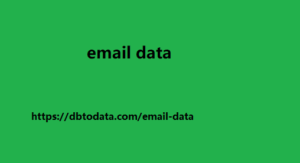To increase visits to a site , one of the first things you start doing is to “hammer” on topics and queries searched by users, with the aim of carving out that place in the sun on the search results page, collecting clicks and visits. The problems of this activity are numerous: there is great competition; authoritative and “old” sites are already well positioned; it requires consistency and patience; it takes a lot of time to understand which topics to focus on, identify sources, insert your point of view, write, correct … but above all, even once all these steps are completed (day after day), you still cannot be sure of the result.
Mark Schaefer first and foremost
But also others, have recently strongly underlined the importance of developing , starting from a figure: 70% of the consumers of the companies he interviewed are inclined to purchase a good / service if suggested or shared by a friend. So the real metric to focus on would be interpreted by “moving contents” (be careful: not necessarily quality … ) A central passage of Mark Schaefer’s article in my opinion is this: If the real economic value comes from the transmission of content, and people share content for intrinsic and emotional reasons.
Why do companies spend so much money to try to get
People to share content for economic reasons? Ok, nothing shocking perhaps, a little was known, but Schaefer’s position is rather fundamental. So how can we stimulate this “trust”, that is, trust in you as producers of online content? How to build your own “trust”? 1 The factors of trust addresses the topic and offers a nice infographic with 4 TRUST factors , namely: Authority History (in the sense of “how long have you been posting; how long germany email list has your domain been around; etc) Identity Originality of contents (unpublished) He then underlined how popularity, authority and trust for Google are elements that partly overlap, triggering each other, according to a probable pattern: Popularity (who manages to be “visible” in the long term) you manage to get a lot of visits from.
Google but the quality of the content is low
You will soon be downgraded and you will lose visits; if instead you. Have good quality of content but you are unable to “distribute” it effectively, you will be talking to the wind. MORAL – unlike what Mark Schaefer claims, in my very humble opinion you can’t help but aim. For visits right from the start, therefore dedicating a fair amount of thought to your SEO Copywriting choices . In fact, if you do not have visibility (popularity) on search engines, therefore visits. You will not be able to be recognized, over time, as authoritative on a given topic (authoritativeness); ergo, you will not be able to reach the coveted goal of Trust.
Content for Readers and Google:
The Rules of the Pyramid a) Content pyramid Almost a year ago. Web In proposed a beautiful “ Content Pyramid ” that can help you build an effective editorial plan that is appreciated by readers. This is a kind of outline that can help you give a strong identity as content producers. Responding to the needs forces of digital global warming of readers. b). Content pyramid – bis It has the same name as the previous one. But this pyramid (which I think I read about on My Social Web, but unfortunately I can’t find the link anymore) aims to. Make you build content that is always better than what you can find online.
In short, this Content Pyramid is an
Approach that explains how to build a “winning” content because. It aims to write “ more and better ” on a given topic, with a clear view to increasing job data visibility on search engines. In fact, there were 3 steps: Identify the topic of your interest , for which you want to position. Yourself and be recognized as an authoritative person Find the best links on. The topic ; “best” in terms of quality and positioning on Google & co. Knead all these contents in a more effective and certainly “personal” way. Adding your opinion, your experience, your particular point of view and new. Elements (if they exist), making connections and identifying unpublished case studies.

